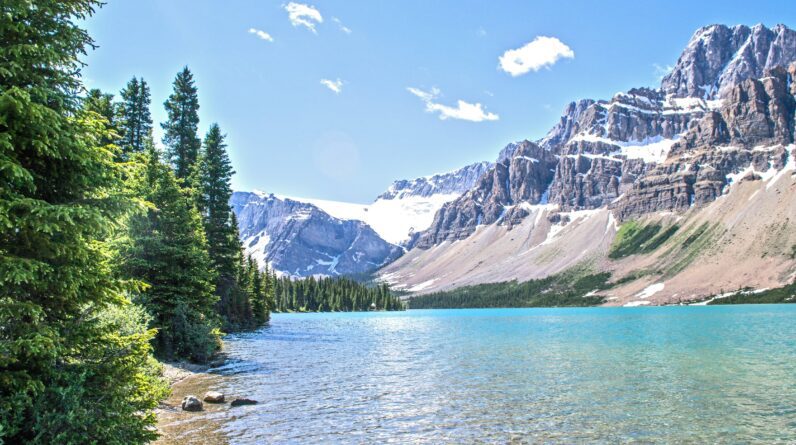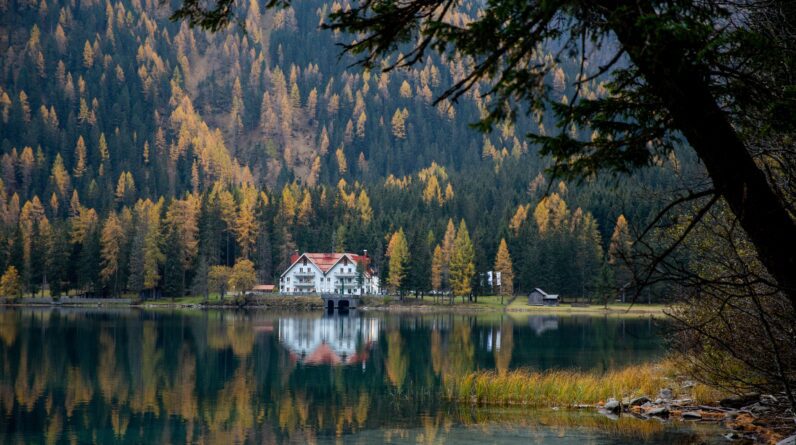
Welcome to the dazzling world of Las Vegas, Nevada! Nestled in the heart of the Mojave Desert, this city is a beacon of entertainment, luxury, and adventure. If you’ve ever found yourself wondering, ‘where is Las Vegas, Nevada on the map?’, you’re in the right place.
Las Vegas is situated in the southern part of the state of Nevada, USA. It’s approximately 270 miles northeast of Los Angeles, California, and about 300 miles northwest of Phoenix, Arizona. This strategic location makes it a popular travel destination for both domestic and international tourists.
Being in the desert doesn’t mean isolation; quite the opposite! Las Vegas is a hub of connectivity, with McCarran International Airport serving as a major gateway. The city’s geographical coordinates are approximately 36.1699° N latitude and 115.1398° W longitude, placing it firmly in the Pacific Time Zone.
The unique location of Las Vegas not only contributes to its dry, sunny weather but also to its vibrant nightlife and the numerous outdoor activities available in the surrounding areas. Whether you’re looking to explore the Las Vegas Strip, venture out to Red Rock Canyon, or take a quick trip to the Grand Canyon, Las Vegas serves as the perfect starting point.
Ready to dive deeper into the wonders of Las Vegas? Visit our website to learn more and get started today! Click here.
Geographical Context of Las Vegas

Understanding the geographical context of Las Vegas gives you a deeper appreciation of its unique charm. Located in Clark County, Las Vegas sits within the arid Mojave Desert. Despite its desert surroundings, the city is a vibrant oasis teeming with life and excitement.
The city is positioned in a valley that is bordered by mountain ranges on all sides, providing a stunning backdrop for the neon lights and modern architecture. To the northwest lies the Spring Mountains, home to Mount Charleston, the highest peak in the region. To the east, the McCullough Range extends into the impressive Lake Mead National Recreation Area, offering ample opportunities for outdoor enthusiasts.
Las Vegas is also remarkably close to several natural wonders. The Grand Canyon, Zion National Park, and Death Valley National Park are all within driving distance, making Las Vegas an excellent base for exploring these awe-inspiring landscapes. The close proximity to these natural attractions adds a unique dimension to the city, blending urban excitement with natural beauty.
In terms of climate, Las Vegas experiences hot summers and mild winters. With over 300 days of sunshine annually, it’s no wonder the city is a year-round destination. The geographical features contribute to this climate, ensuring clear skies and minimal rainfall.
This mix of urban and natural elements makes Las Vegas a truly unique destination that offers something for every kind of traveler. From the bright lights of the Strip to the serene beauty of nearby national parks, the geographical context of Las Vegas is as diverse as it is captivating.
Las Vegas on the United States Map

When pinpointing Las Vegas on the United States map, you will find it in the southwestern region of the country. Specifically, Las Vegas is situated in the state of Nevada, which is bordered by California to the west, Oregon to the northwest, Idaho to the northeast, Utah to the east, and Arizona to the southeast. The city itself is located in the southern part of Nevada, near the borders of California and Arizona.
Las Vegas is approximately a four-hour drive from Los Angeles, making it a popular road trip destination for Californians looking for a quick getaway. It is also about a five-hour drive from Phoenix, Arizona, and just over two hours from the famous Hoover Dam, which lies on the Nevada-Arizona border.
On a broader scale, Las Vegas is part of the Western United States, a region known for its diverse landscapes, ranging from coastal areas to deserts and mountains. This positioning makes Las Vegas an ideal starting point for exploring the vast and varied terrain of the American West.
When looking at a map, you’ll notice that Las Vegas is relatively isolated compared to other major metropolitan areas. This isolation has contributed to its development as a unique, self-contained entertainment hub. The city’s remote location has also fostered a sense of mystique and allure, drawing visitors from around the world eager to experience its famous casinos, shows, and nightlife.
Additionally, McCarran International Airport, one of the busiest airports in the United States, serves as a major gateway to Las Vegas. This accessibility ensures that despite its remote desert location, Las Vegas is always within reach for those seeking adventure and excitement.
Nearby Landmarks and Attractions

Las Vegas isn’t just about the glittering lights and bustling casinos of the Strip. The city is surrounded by an array of nearby landmarks and attractions that offer a diverse range of experiences for every traveler. From natural wonders to historical sites, there’s something for everyone to enjoy.
One of the most iconic landmarks near Las Vegas is the Hoover Dam, a marvel of modern engineering located just a short drive away. This colossal structure, which spans the Colorado River, offers stunning views and a fascinating glimpse into the history of the American Southwest.
For those looking to explore the great outdoors, the Red Rock Canyon National Conservation Area is a must-visit. Located just 17 miles west of the city, this breathtaking area boasts dramatic red rock formations, scenic hiking trails, and opportunities for rock climbing and wildlife viewing.
Another natural wonder not to be missed is the Valley of Fire State Park. This park, approximately an hour’s drive from Las Vegas, is renowned for its vibrant red sandstone formations and ancient petroglyphs, making it a fantastic destination for photography, hiking, and learning about Native American history.
If you’re interested in history and culture, take a trip to the nearby town of Boulder City. Known for its quaint charm and historical significance, Boulder City offers unique attractions such as the Boulder City/Hoover Dam Museum and the Nevada State Railroad Museum.
For a completely different experience, visit the Neon Boneyard, part of the Neon Museum in Las Vegas. This outdoor exhibit features a collection of retired neon signs that once lit up the Strip, offering a nostalgic look at the city’s vibrant history.
Whether you’re drawn to the natural beauty of the desert, the fascinating history of the region, or the unique cultural attractions, the area surrounding Las Vegas has plenty to offer. Your adventure doesn’t have to end on the Strip; make sure to explore these incredible landmarks and attractions during your visit.
How to Get to Las Vegas

Planning your journey to Las Vegas is an exciting part of the travel experience. Whether you’re arriving by air, road, or rail, there are several convenient options to get you to this dazzling destination.
Most travelers opt to fly into McCarran International Airport (LAS), located just a few miles from the famous Las Vegas Strip. As one of the busiest airports in the United States, McCarran offers numerous domestic and international flights from a wide range of airlines. Once you land, you can easily find transportation options like taxis, rideshares, shuttles, or rental cars to reach your hotel or other accommodations.
If you prefer a road trip, Las Vegas is well-connected by major highways. The city is accessible via Interstate 15, which runs north-south through the heart of Las Vegas, connecting it to Southern California and Utah. For those driving from Phoenix, Arizona, the U.S. Route 93 is a popular route that offers scenic desert views along the way.
While there isn’t a direct Amtrak train service to Las Vegas, you can still incorporate rail travel into your journey. One option is the Amtrak Southwest Chief, which runs between Chicago and Los Angeles. You can disembark at the Kingman, Arizona station and take a bus or rent a car for the remaining 100-mile journey to Las Vegas.
For those who enjoy bus travel, several companies offer regular services to Las Vegas from major cities like Los Angeles, San Diego, and Phoenix. Companies like Greyhound, Megabus, and FlixBus provide comfortable and affordable options for reaching the city by road.
No matter which mode of transportation you choose, getting to Las Vegas is straightforward and hassle-free. With a bit of planning, you’ll soon find yourself immersed in the vibrant atmosphere and endless entertainment that this iconic city has to offer.
Travel Tips for Visiting Las Vegas
Visiting Las Vegas can be an exhilarating experience filled with neon lights, world-class entertainment, and culinary delights. To make the most of your trip, here are some essential travel tips to keep in mind.
1. Stay Hydrated: Las Vegas is located in the Mojave Desert, which means it can get extremely hot, especially during the summer months. Carry a water bottle with you and make sure to stay hydrated throughout the day.
2. Dress Comfortably: While Las Vegas is known for its glamour, comfort is key when exploring the city. Opt for light, breathable clothing and comfortable walking shoes, as you’ll likely be doing a lot of walking along the Strip.
3. Plan Your Itinerary: With so much to see and do, it’s wise to plan your activities in advance. Book shows, tours, and dining reservations ahead of time to secure your spot and avoid disappointment.
4. Take Advantage of Free Attractions: Las Vegas offers plenty of free attractions, such as the Bellagio Fountains, Fremont Street Experience, and the Mirage Volcano. These can be great ways to enjoy the city without breaking the bank.
5. Be Prepared for the Casinos: If you plan to try your luck at the casinos, set a budget and stick to it. Remember that gambling should be fun and not a way to make money. Also, don’t forget to sign up for players’ clubs to earn rewards and discounts.
6. Use Public Transportation: The Las Vegas Monorail, buses, and rideshares are convenient ways to get around the city. These options can save you time and money compared to driving and parking.
7. Explore Beyond the Strip: While the Strip is the main attraction, don’t miss out on exploring other parts of Las Vegas. Visit downtown Las Vegas for a different vibe, or take a day trip to nearby attractions like the Hoover Dam or Red Rock Canyon.
With these tips in mind, you’re all set for an unforgettable adventure in Las Vegas. Visit our website to learn more and get started today! Click here.







